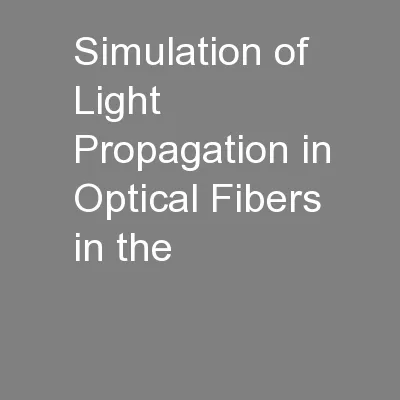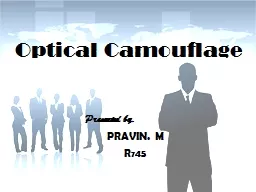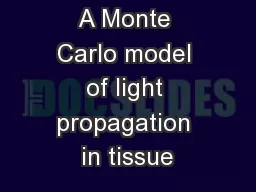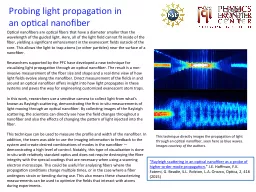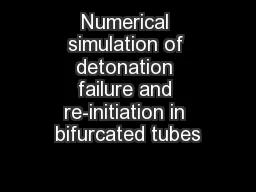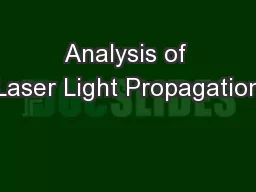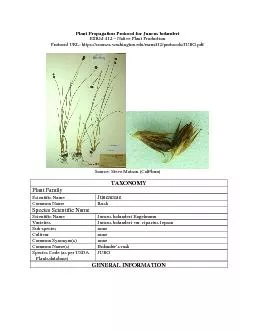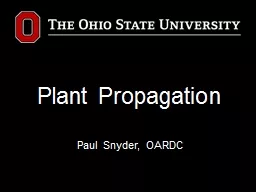PPT-Simulation of Light Propagation in Optical Fibers in the
Author : tatyana-admore | Published Date : 2016-10-06
GlueX Tagger Microscope June Yong Yang Nuclear physics site Mentor Dr Richard Jones Introduction My work was to model the propagation of light inside an optical
Presentation Embed Code
Download Presentation
Download Presentation The PPT/PDF document "Simulation of Light Propagation in Optic..." is the property of its rightful owner. Permission is granted to download and print the materials on this website for personal, non-commercial use only, and to display it on your personal computer provided you do not modify the materials and that you retain all copyright notices contained in the materials. By downloading content from our website, you accept the terms of this agreement.
Simulation of Light Propagation in Optical Fibers in the: Transcript
Download Rules Of Document
"Simulation of Light Propagation in Optical Fibers in the"The content belongs to its owner. You may download and print it for personal use, without modification, and keep all copyright notices. By downloading, you agree to these terms.
Related Documents

